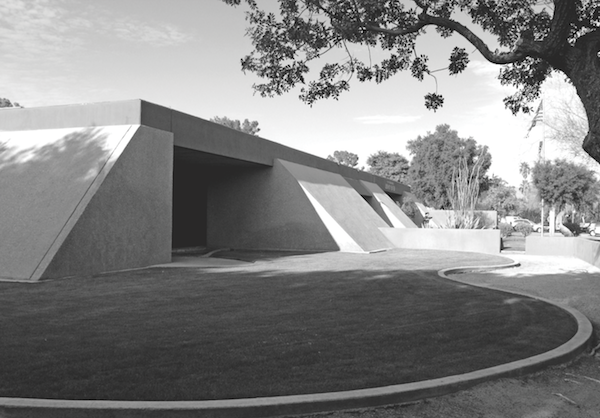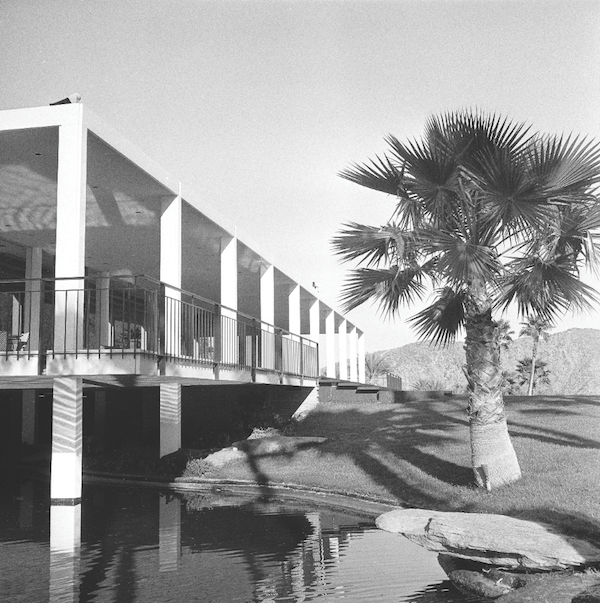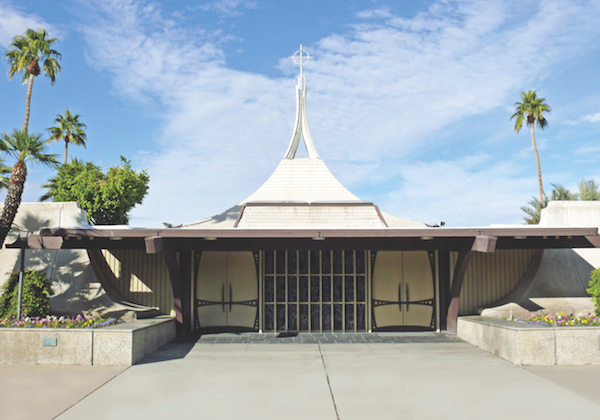
William Francis Cody grew up in Dayton, Ohio; graduated from the University of Southern California in 1942; and put himself through college by working for Cliff May, the creator of relaxed ranch houses that allowed instant access to the outdoors. Cody absorbed those lessons and the Bauhaus modernism being taught at USC and arrived in Palm Springs seemingly programmed to create homes with perfect proportions and slender frames.
Cody first visited Palm Springs in the mid-1940s at the invitation of a friend, cartoonist and Western artist Jimmy Swinnerton, a fellow asthma sufferer who worked for the Hearst newspapers and was sent to the desert for his health.
Cody was immediately put to work, helping the Desert Inn’s owner, Nellie Coffman, renovate the cottages at her hacienda-style hotel. He moved his family to the desert full-time and became part of the core group of architects who arrived during the postwar period and transformed the village into a city.

photo by roger c. palmer
The Del Marcos Hotel won an award as an example of new resort architecture.
Cody’s first solo commission was the Del Marcos Hotel (1947), which won an award from the AIA’s Southern California chapter as an example of new resort architecture. Then he was hired by Jack Wrather to build L’Horizon (1952), a desert getaway for the oilman and his friends.
By the 1950s, Palm Springs was basking in its status as a chic resort. And in a boon to the architects, instead of flocking to hotels, many lovers of the valley preferred to build their own homes so that they could have their own pools and enjoy complete privacy.

photo by roger c. palmer
The Palm Springs Library was built in 1975.
As Cody’s reputation grew, so did his thinking about desert architecture and how it should look and function. What made Cody so instrumental to the look of Palm Springs was his technical prowess and meticulous attention to detail. He didn’t just slap the slender modern rectangle down in the desert — he put it on a diet and shaved it down to nothingness.
He extended rooflines out 12 feet to create shade as well as outdoor living spaces. He flowed water through channels and into reflecting pools. He placed swimming pools right up against living areas. Cody’s designs hid doorframes within walls, elongated steel roof spans, and reduced steel beams to slivers so that absolutely nothing interfered with the views of the outdoors.

The Eldorado Country Club clubhouse – considered the gold standard of country clubs for decades.
When Cody began designing clubhouses and private homes at the desert’s exclusive country clubs — Thunderbird, Tamarisk, and Eldorado — he was working at full throttle.
This was the first time that golf courses became part of full-fledged residential communities, and it defined the future of resort living. His collaborations with Arthur Elrod, the top interior designer in the desert, produced some of the most sophisticated projects of the period, especially the clubhouse at Eldorado, which was the gold standard of country clubs for decades.
Although his best work is hidden behind country club gates, Cody’s public projects included the Palm Springs Spa Hotel and Bathhouse (1958 and 1962), the Springs Restaurant (1957), the Palm Springs Library (1975) and St. Theresa church (1966). During the 1960s,
Cody served on the Palm Springs Planning Commission and the Planning Collaborative in an attempt to protect the city from architectural mediocrity. But he was felled by a stroke in 1971 and passed away in 1978 at the age of 62.

photo by roger c. palmer
The exterior of St. Theresa church in Palm Springs.
Bill Cody’s legacy to Palm Springs is encapsulated in his pioneering Desert Modern projects. His architecture shimmers with a glamour and panache that never goes out of style.
This is the third of a nine-part series adapted from The Desert Modernists: The Architects Who Envisioned Midcentury Modern Palm Springs. The book, published by Modernism Week in partnership with Palm Springs Life, will be released in February 2015 to correspond with the 10th anniversary of the 10-day event, Feb. 12-22, 2015. For more information, visit www.modernismweek.com. This chapter’s writer, Adele Cygelman, is the author of Palm Springs Modern, a best-seller since its publication in 1999 by Rizzoli Classics. Cygelman was a senior editor of Architectural Digest and launched four interior design and real estate magazines for Robb Report. She and her business partner, Susan Pekich, now focus on luxury real estate and architecture with their company Domain.

